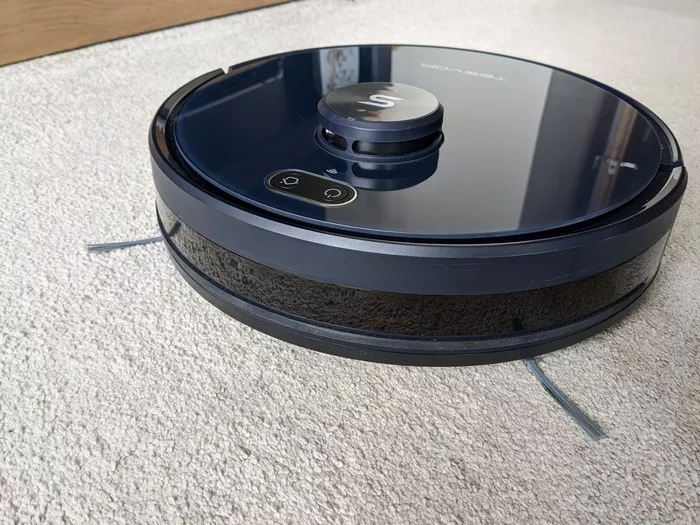In the realm of household appliances, vacuums stand out for their efficiency in cleaning but often draw ire for their loud operation. The persistent whirring and roaring may leave users wondering why these machines are so loud. This guide delves into the science and engineering behind the cacophony, shedding light on the factors contributing to vacuum noise.
Unveiling the Decibel Dynamics
Vacuums, though indispensable for maintaining cleanliness, can emit noise levels ranging from 70 to 90 decibels (dB) or even higher, akin to the noise level of a bustling city street. Understanding the reasons behind this clamor requires examining various components and mechanisms involved in their operation.
1. Motor Power and Design
The heart of a vacuum lies in its motor, responsible for generating the suction power necessary to lift dirt and debris. Motors in vacuums are typically high-powered to ensure effective cleaning across various surfaces. However, this potency comes at the cost of increased noise production. The design and construction of the motor, including the type of rotor and fan blades, can influence the noise output significantly.
2. Airflow and Pressure Differential
The suction force generated by vacuums relies on airflow and pressure differentials. As air rushes through the vacuum’s intake, it encounters resistance from filters, hoses, and various surfaces within the machine. This turbulent airflow can produce considerable noise, akin to the sound of rushing wind or a strong gust. Furthermore, pressure differentials created by the motor’s operation contribute to the overall noise level, especially during transitions between high and low pressure zones within the vacuum.
3. Mechanical Components and Vibrations
Vacuums consist of numerous mechanical components, including brushes, belts, and bearings, which facilitate movement and rotation. The interaction of these parts can produce vibrations that reverberate throughout the machine, amplifying the perceived noise level. Additionally, the material composition of these components and their fit within the vacuum’s chassis play a crucial role in dampening or exacerbating vibrations, thereby affecting noise output.
4. Acoustic Resonance and Cavity Effects
The structural design of a vacuum can inadvertently contribute to noise amplification through acoustic resonance and cavity effects. Certain frequencies generated by the motor or airflow may resonate within the vacuum’s enclosure, magnifying their intensity. Similarly, the presence of enclosed cavities or chambers within the vacuum can act as sound amplifiers, reflecting and reinforcing noise waves. Minimizing these resonance phenomena requires meticulous design considerations and acoustic engineering.
Quieting the Commotion: Strategies for Noise Reduction
While it may be challenging to eliminate noise entirely from vacuum cleaners, several strategies can help mitigate their disruptive effects on household peace and tranquility:
1. Insulation and Sound Absorption
Integrating sound-absorbing materials such as foam or specialized fabrics within the vacuum’s casing can help dampen noise transmission. These materials absorb and dissipate sound waves, reducing the overall noise level emitted by the machine. Additionally, insulating the motor compartment and other noisy components can further minimize noise propagation.
2. Engineered Design Optimization
Manufacturers can optimize vacuum design through computational fluid dynamics (CFD) and finite element analysis (FEA) to minimize turbulence and pressure differentials, thereby reducing noise generation. Additionally, strategic placement of components and meticulous attention to manufacturing tolerances can mitigate vibrations and resonance effects, leading to quieter operation.
3. Innovative Motor Technologies
Advancements in motor technology, such as brushless motors and digitally controlled variable-speed drives, offer quieter alternatives to traditional brushed motors. These technologies not only enhance energy efficiency but also reduce noise emissions by minimizing mechanical friction and optimizing motor operation.
4. Noise Reduction Accessories
Utilizing accessories such as nozzle attachments and brush heads specifically designed for noise reduction can help dampen the sound emitted during vacuuming. These accessories optimize airflow and minimize turbulence, resulting in quieter operation without compromising cleaning performance.
Conclusion
While the clamor of vacuum cleaners may seem unavoidable, understanding the underlying mechanisms and implementing effective noise reduction strategies can significantly enhance user experience. By leveraging advancements in motor technology, design optimization, and sound insulation, manufacturers can strive towards quieter and more user-friendly vacuum cleaners. Ultimately, the pursuit of quieter vacuums aligns with the broader goal of enhancing household comfort and well-being.
FAQs
Q1: Why are vacuums so loud?
A1: Vacuums emit noise primarily due to the high-powered motors required for generating suction force, turbulent airflow through the machine, mechanical vibrations from moving parts, and acoustic resonance within the vacuum’s enclosure.
Q2: Can I reduce vacuum noise without compromising cleaning performance?
A2: Yes, several strategies such as using sound-absorbing materials, optimizing vacuum design, adopting innovative motor technologies, and utilizing noise reduction accessories can help minimize noise without compromising cleaning efficiency.
Q3: Are there quieter alternatives to traditional vacuum cleaners?
A3: Yes, advancements in motor technology, including brushless motors and digitally controlled variable-speed drives, offer quieter alternatives to traditional brushed motors. Additionally, specialized vacuum models designed for low noise emission are available in the market.

